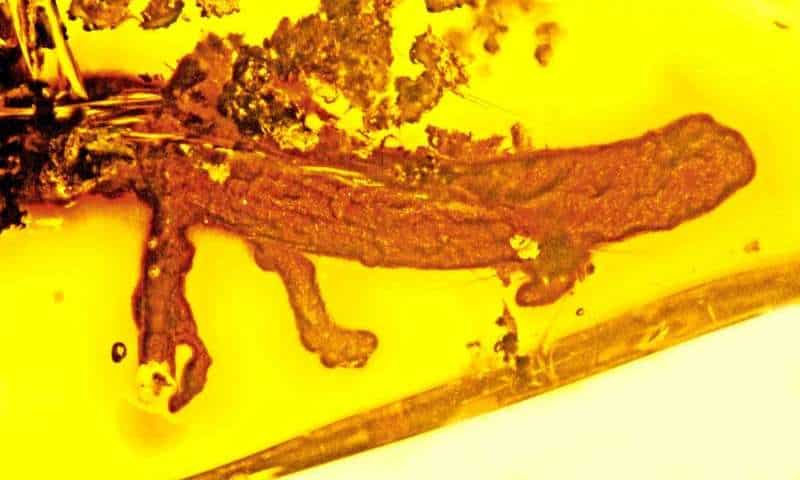Finding insects, plants or even dinosaur feathers trapped in amber s rare and exciting. But finding a fossil salamander in amber… that’s something else – it’s actually unique. But the salamander’s unfortunate fate sparked immediate interest from researchers: not only is it a unique finding, but it’s from a never-before seen species of salamander, and it comes from the Caribbean – a place where there are no salamanders today.
The little creature suffered a most unfortunate fate. It was only a baby when it got into a skirmish of some kind and its back limb got torn off. Then, through a series of unknown events, it somehow got trapped in resin, where it remained stuck for the next 20-30 years. But one salamander’s misfortune is another paleontologist’s fortune.
“There are very few salamander fossils of any type, and no one has ever found a salamander preserved in amber,” said George Poinar, Jr., a professor emeritus in the OSU College of Science, in a press release. “And finding it in Dominican amber was especially unexpected, because today no salamanders, even living ones, have ever been found in that region.”
Salamander fossils of all types are rare. The amphibians with a lizard-like appearance are found in the Holarctic and Neotropical regions, though some researchers believe that they previously lived in other areas as well – and this is a fine piece of evidence.
The new species has been called Palaeoplethodon hispaniolae by the authors of the paper, and it adds more hint not only about the biology of the Caribbean area, but also about its geology and climate; salamanders require very specific conditions to be able to thrive, and finding a salamander basically ensures that those conditions were fulfilled at one point in time.
The family in which Palaeoplethodon belonged is fairly common in North America, especially in the Appalachian mountains, but this ancient species has some significant differences from the salamanders we see today. For starters, it didn’t have the distinctive “salamander legs”, and instead sported a kind of webbing that might have made it a worse climber.
But the species also raises some important questions: why is it that all salamanders went extinct in the Americas? Was there some predator that simply killed them all, some climatic event? Or did they simply drift with the tectonic movement of the Americas? We’re still far away from answering those questions, but this little guy might provide some valuable hints.










